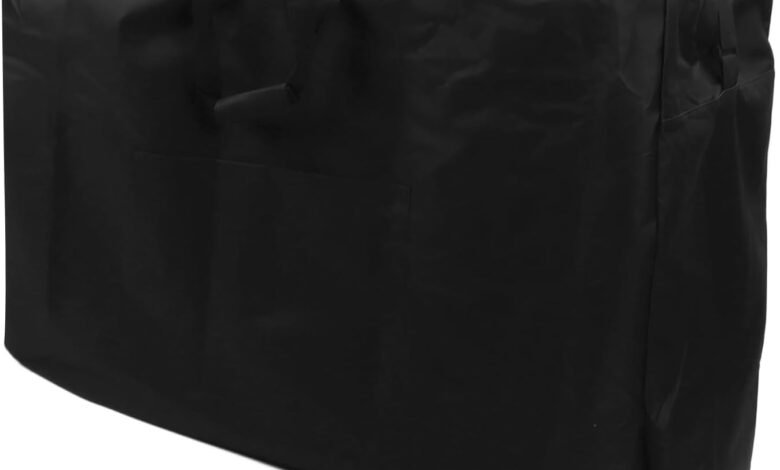Folding Chair Flight Case: The Complete Protection Guide

Introduction
Event organizers, production companies, and rental businesses understand one universal truth: folding chairs take a beating during transport. Whether you’re moving chairs between wedding venues, concert halls, or corporate events, the constant loading, unloading, and stacking can quickly turn your investment into damaged inventory.
A quality folding chair flight case transforms this challenge into a non-issue. These specialized protective containers shield your chairs from the rough handling that comes with frequent transportation, extending their lifespan and maintaining their professional appearance. More importantly, they help you avoid the costs associated with replacing damaged equipment and the embarrassment of setting up worn-out chairs at premium events.
This comprehensive guide will walk you through everything you need to know about selecting, using, and maintaining flight cases for folding chairs. From understanding key protective features to mastering proper packing techniques, you’ll gain the knowledge needed to keep your chairs in pristine condition no matter how often they travel.
Why Your Folding Chairs Need Flight Case Protection
Transportation poses the greatest risk to folding chair longevity. Standard moving practices expose chairs to multiple hazards that can compromise both their functionality and appearance. Understanding these risks helps justify the investment in proper protective equipment.
Physical damage during loading and unloading ranks as the primary concern. Chairs get dropped, knocked against truck walls, and crushed under other equipment. Without adequate protection, hinges bend, seats crack, and frames dent. These issues not only affect the chair’s structural integrity but also create safety hazards for end users.
Weather exposure presents another significant challenge. Rain, snow, and humidity can cause metal components to rust and fabric elements to deteriorate. Even brief exposure during loading can lead to long-term damage that affects both appearance and functionality.
Stacking pressure compounds these problems. When chairs are stacked without proper separation, the weight can cause permanent deformation. Lower chairs in the stack bear excessive loads, leading to bent frames and compressed cushions that never fully recover their original shape.
Professional presentation standards add another layer of importance to chair protection. Events often require chairs to look pristine, and any visible wear or damage reflects poorly on service providers. Flight cases help maintain the professional appearance that clients expect and are willing to pay premium prices for.
Essential Features of Quality Flight Cases
The most effective folding chair flight cases incorporate specific design elements that address common transportation challenges. Understanding these features helps you select cases that provide optimal protection for your specific needs.
Heavy-duty construction forms the foundation of reliable protection. Look for cases built with reinforced corners, robust latching systems, and thick-wall construction. These elements ensure the case itself can withstand the rigors of repeated loading and transport without compromising the protection it provides.
Interior cushioning systems protect chairs from impact and vibration during transport. High-quality foam padding should line all interior surfaces, with particular attention to areas where chairs make contact during movement. The padding should be dense enough to absorb impacts while remaining soft enough to prevent pressure points.
Stackability features enable efficient loading and space utilization. Well-designed cases include interlocking elements that prevent shifting when stacked, along with reinforced tops that can support the weight of multiple cases without deformation.
Ventilation systems prevent moisture buildup that can lead to rust and fabric deterioration. Strategic vent placement allows air circulation while maintaining structural integrity and keeping out dust and debris.
Secure latching mechanisms keep cases closed during transport while allowing quick access when needed. Look for systems that resist accidental opening while remaining easy for authorized users to operate.
Types of Flight Cases for Different Chair Configurations
Various flight case designs accommodate different folding chair types and transportation requirements. Selecting the appropriate style depends on your chair specifications, transport frequency, and storage constraints.
Single-chair cases offer maximum individual protection but require more storage space and handling time. These work well for high-value chairs or situations where only a few chairs need transport. The individual protection level is unmatched, but the increased case-to-chair ratio can impact cost efficiency.
Multi-chair cases balance protection with efficiency by housing multiple chairs in a single container. Common configurations include 4, 6, 8, or 10-chair capacities. These cases reduce handling time and storage requirements while still providing substantial protection through interior dividers and cushioning systems.
Modular systems provide flexibility for varying chair quantities. These cases can be connected or used independently, allowing you to scale protection based on specific job requirements. The modular approach works particularly well for businesses with fluctuating chair transport needs.
Wheeled cases reduce physical strain and speed up loading processes. Integrated wheel systems and ergonomic handles make it easier to move heavy loads, particularly beneficial for frequent users or those dealing with substantial chair quantities.
Proper Packing Techniques for Maximum Protection
Correct packing methodology significantly impacts the protection level your flight case provides. Following proven techniques ensures chairs remain secure and undamaged throughout transport.
Chair preparation begins before case loading. Inspect each chair for existing damage and clean off any debris that could cause scratches or other damage during transport. Ensure folding mechanisms work smoothly and lock properly to prevent unexpected opening during movement.
Positioning chairs within the case requires attention to weight distribution and contact points. Place heavier chairs at the bottom when stacking is necessary, and ensure folding mechanisms face outward to prevent interference between chairs. Use provided dividers to maintain separation and prevent direct contact between metal surfaces.
Securing methods prevent movement within the case during transport. Utilize all provided straps, buckles, or retention systems to keep chairs firmly in place. Loose chairs can shift during transport, causing damage to both the chairs and the case interior.
Weight distribution affects both case handling and chair protection. Balance the load to prevent excessive stress on any single area of the case, and avoid exceeding manufacturer weight recommendations which could compromise case integrity or make handling unsafe.
Maintenance Strategies for Long-Term Performance
Regular maintenance extends both flight case life and the protection level it provides. Establishing routine care procedures prevents small issues from becoming major problems.
Cleaning procedures should address both interior and exterior case surfaces. Remove debris from interior padding that could cause scratches or punctures, and clean exterior surfaces to prevent corrosion or deterioration. Pay particular attention to latching mechanisms and hinges where dirt accumulation can affect functionality.
Hardware inspection identifies potential failure points before they cause problems. Check latches, hinges, handles, and wheels regularly for wear or damage. Replace worn components promptly to maintain case integrity and prevent unexpected failures during transport.
Padding replacement becomes necessary as foam compresses or deteriorates over time. Monitor cushioning thickness and resilience, replacing sections that no longer provide adequate protection. Quality replacement foam maintains the case’s protective capabilities.
Storage considerations affect case longevity when not in use. Store cases in dry, climate-controlled environments when possible, and avoid stacking empty cases in ways that could cause deformation. Proper storage prevents deterioration during inactive periods.
Real-World Applications and Benefits
Event rental companies report significant chair replacement cost reductions after implementing flight case systems. One regional company tracked a 75% decrease in chair damage claims over two years following case adoption, with the cases paying for themselves through reduced replacement costs.
Wedding planners benefit from the professional appearance maintained through case protection. Chairs that travel to multiple venues retain their pristine appearance, allowing planners to command premium pricing for consistently high-quality presentation.
Corporate event organizers value the reliability flight cases provide. Knowing chairs will arrive undamaged reduces setup stress and ensures professional presentation standards are maintained regardless of transport conditions.
Production companies working with high-end venues require the protection level only quality flight cases provide. Venue requirements often specify equipment condition standards that are difficult to maintain without proper protective transport systems.
Making the Right Investment for Your Needs
Selecting the appropriate folding chair flight case requires balancing protection needs, transport frequency, and budget considerations. The investment pays dividends through extended chair life, maintained professional appearance, and reduced replacement costs.
Consider your specific use patterns when evaluating options. High-frequency users benefit most from premium cases with advanced features, while occasional users might find basic protection adequate for their needs. The key lies in matching case capabilities to actual requirements rather than over-purchasing or under-protecting.
Quality flight cases represent a smart business investment that protects your chair inventory while projecting professionalism to clients. The protection they provide pays for itself through reduced replacement costs and maintained equipment appearance, making them essential tools for anyone serious about professional event production.
Frequently Asked Questions
What size flight case do I need for my folding chairs?
Flight case size depends on your chair dimensions and quantity requirements. Measure your chairs when folded, including any protruding elements like armrests or seat backs. Most manufacturers provide sizing guides that match case interior dimensions to specific chair models.
How many chairs can fit in a standard flight case?
Case capacity varies by chair size and case design. Common configurations range from 4 to 12 chairs per case, with 6-8 chair cases offering the best balance of protection and handling efficiency for most applications.
Are flight cases worth the investment for small event companies?
The investment typically justifies itself through reduced chair replacement costs and maintained professional appearance. Even small companies benefit from the protection, particularly when serving premium clients who expect pristine equipment.
How often should flight case padding be replaced?
Padding replacement frequency depends on usage intensity and padding quality. Inspect padding every 6-12 months for compression, tears, or contamination. Replace sections when they no longer provide adequate cushioning or show signs of deterioration.
Can flight cases be customized for specific chair models?
Many manufacturers offer customization options for specific chair models or unique requirements. Custom foam inserts, modified dimensions, and specialized retention systems can be incorporated to optimize protection for your specific chairs.


